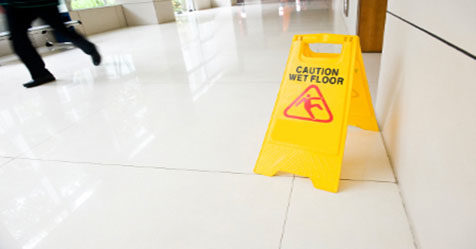After reading the title of this article, you might wonder, “What does communication have to do with floor care?”
Let me tell you about a particularly enlightening experience. Our emergency department at Wentworth-Douglass Hospital in Dover, New Hampshire, was scheduled to undergo a renovation after more than 20 years. It’s far too busy of a department to close very often. After some initial discussions on renovations, I received an email invitation to a construction-planning meeting.
Our facility had engaged a firm fluent in hospital interior design. Collaboration for this project was key. The planning meetings included the emergency department nursing leadership; the plant operations director, supervisor, and manager; the construction project manager; the environmental services (EVS) director and operations manager; and members of the information systems team.
Choosing the department flooring
I began lobbying that any new flooring be a low-maintenance product. Because our emergency department is so busy, we need to beg the nursing team to let us close sections of the department for a time so we can strip the flooring and apply floor finish. Unsurprisingly, arranging the time to perform this maintenance is difficult so we seldom get the opportunity.
I asked for the flooring manufacturer’s recommended cleaning instructions and a list of recommended cleaners, along with some sizable flooring samples, so I could be sure that our cleaners and chemicals wouldn’t adversely affect the flooring options.
The flooring that the department eventually chose to install was a no-maintenance rubber with a slight texture and a wood-grain look. I wasn’t thrilled with it, but we felt we could make it work. After reviewing all the manufacturer’s recommendations for cleaning and products, I attended another meeting with the emergency department nursing staff, plant operations, the decorators, and factory representatives. The plan was approved, and we scheduled weekly progress meetings.
Following manufacturers’ instructions
The construction project took several weeks. The emergency department was not going to close, but the nursing team would give up several rooms and sections of corridor at a time. Once the flooring was installed, EVS staff would be allowed to come in and clean according to the manufacturer’s post-installation maintenance guidelines.
Although we followed the manufacturer’s care instructions exactly, the floors had very little shine. After we completed an area, it was released to the nursing team the following morning for patient care.
It didn’t take long for the nursing staff to start complaining about the way the rooms looked. The floors immediately showed scuff and wheel marks, and dirt readily adhered to the floors. The installers and plant operations crew accused the EVS team of not following the manufacturer’s instructions correctly. Plant operations contacted the manufacturer, and they sent us the same instructions.
Still the problems continued, and EVS staff were made to look as though they couldn’t follow simple instructions. Finally, in desperation, we convinced the manufacturer’s representative to visit our facility. The representative requested that we have a high-speed burnishing machine available and a bucket and wringer set up for his visit. He also suggested that we order burnish solution and told us he would bring the burnishing pads.
Revealing a secret solution
The representative brought diamond pads made by the flooring manufacturer, which he used to prep the floors. These pads were not mentioned in the manufacturer’s care instructions. He explained that we needed to use these pads after installation, especially once the floors began to lose their shine and if scuff marks appeared.
I pointed out that nowhere in the manufacturer’s instructions did it say that we were to use burnish solution and diamond pads. He told me that the manufacturer purposely withholds that information so that its competitors don’t find out about it. I said, “You know, you could have told us this weeks ago and it would have saved us a lot of grief!” He could only apologize.
So … what does good communication have to do with floor care? Everything!




